|
Congratulations to former lab member Dr. Dan Nelson, for winning this year's Society for Freshwater Science Hynes Award for New Investigators. Dan won the award for his 2017 GCB paper that described how whole-stream temperature manipulation changed the structure of an Icelandic stream community. Well done, Dan! The shot above shows Dan finally giving his award presentation at the SFS meeting in Salt Lake City (four days late due to travel complications caused by severe weather). We had a great time at the meeting, with all three current students (Phoenix, Emma and Kyle) presenting posters.
0 Comments
Our newest NSF project is a large, integrated study that will assess the potential of a warming climate to change how terrestrial organic carbon is processed by forest stream networks. One component of the research involves field manipulations of water temperature in stream-side channels and in a natural stream reach. Over the last year, we have worked very hard to get these manipulations up and running. They are finally both online. Below is a thermal image overlaying a photo of half of our stream-side channel array. The channels provide a range of five temperatures (ambient, +1C, +2C, +3C and +4C), each replicated four times. Our first three-month experiment just ended, during which we measured responses in coarse and fine particulate matter, chironomid midges and Tallaperla stoneflies. The channel array has worked amazingly well. Below is a plot of mean (+/- 1 SE) temperatures for the first few weeks of this spring's experiment, showing how tightly we're able to maintain the treatment differences, while maintaining all the natural temporal variation in temperature. The second temperature manipulation is more ambitious. We are heating an entire stream reach by 3-4C for two years and studying a suite of community- and ecosystem-level responses (everything from midge consumption rates to entire organic matter budgets). The stream-warming infrastructure was completed on time in May 2019 and we are now warming. Below is a shot of our set-up, which diverts the stream flow at the top of the reach into a holding tank, where it is warmed to target temperature by cartridge heaters. The heaters are controlled electronically based on the difference between inflow and outflow temperatures. Overall, very exciting. Fingers crossed that it all goes smoothly for the next two years!
It's been a while since the last post, but we have been busy. The lab has published two exciting papers in the last few months. The first of these was Mick Demi's second publication from his dissertation, a paper in Functional Ecology describing how the structure of five stream communities at Coweeta Hydrologic Lab changed as a result of our experimental dissolved N:P gradient. Below is a nMDS plot from the paper showing the shift in community structure of the five streams during two years of enrichment (filled symbols) relative to pre-enrichment communities (open symbols) and how it was related to experimental increases in soluble reactive phosphorus (SRP) concentrations and resulting decreases in the C:P ratio of leaf litter, the dominant food resource. Overall, the results provide a community-level perspective on the increases in invertebrate production that Mick described in his Ecology paper, while clearly demonstrating the primacy of phosphorus limitation in these small forest stream ecosystems. The second paper was a long time in coming, but we think it was well worth the wait. This Ecology paper followed up on our 2014 study of Ivishak Spring, in which we demonstrated the effect of seasonal cycles of light on the annual pattern of ecosystem metabolism in this high-latitude, spring-fed (and so thermally stable) stream ecosystem. The new paper finally shows the rest of the story - how the animal community exhibits similar seasonal patterns in production that are all driven by extreme arctic cycles of light and its effect on photosynthesis within the stream. The plot below is of daily production of primary consumers (mayflies, midges, etc) over the two years of the study. We are really excited about this dataset, which shows beautifully how production is tightly linked from the bottom of the food web all the way to the top (Dolly Varden char, American dipper, river otters). We're currently working on a proposal to follow up on this work. It would be good to get back to the North Slope.
It's been a looooong road, but the last paper from Mike Venarsky's dissertation finally came out in print in Ecosystems this month. The paper describes the results from a year-long addition of corn detritus to Bluff River Cave in northern Alabama. It's hard to believe that we started the year of pre-addition data collection for that experiment back in February 2009. Ouch. The whole idea was to conduct a proper experimental, whole-ecosystem test of carbon limitation of cave food webs. I persuaded Mike and two other lab members to drive all the way to Iowa to buy the corn stover - the nearest place I could find non-Bt corn that was manageably baled in the old-style, 35-lb square bales. Here's a shot of their arrival home. To illustrate the long gestation of many field ecological studies, here's what my now ten-year old daughter Lillian looked like on that day :) Doesn't time fly? On February 12, 2010 we started putting corn litter in the cave, with the indispensable help of a bunch of volunteers from local caving groups. I love this shot of the bale convoy heading through the woods to the cave entrance. Finally, here's a shot of the manipulated reach, complete with the retention devices Mike put in to slow the progress of the corn stover through the system. It was a ton of work, especially for Mike Venarsky and Brock Huntsman, who did the lion's share of the fieldwork. It was worth it though, despite an often frustrating publication process. Compound-specific and bulk-tissue stable isotope analysis allowed us to track the incorporation of the corn-derived (C4) carbon through the food web, from microbes to salamanders, while comparison of our data with those from a litter-exclusion study in a surface stream showed convergence of their relationships between consumer biomass and organic matter availability. Finally, there were positive responses to increased detritus only among the facultative cave (i.e. surface) taxa, those of the obligate cave taxa presumably being constrained within the timescale of the manipulation by evolutionary adaptations to a low-energy environment. Together, these results highlight that it is low carbon availability, not darkness per se, that really sets the template for cave food web structure. Check out the paper for all the details. By the way, all the stable isotope and microbial work was funded by a NSF dissertation improvement grant to Mike. The paper wouldn't have been nearly so convincing without those analyses. RIP DDIG (sniff!).
Although sampling and preparatory work has been going on for some time, May 1 was the official start date of our new multi-PI NSF project that will examine the consequences of warming for detrital carbon processing in low-order forest stream networks. For the next three years, we'll be working across the Coweeta basin to shed more light on the temperature dependence of detrital processes, using a combination of natural across-stream temperature gradients, a heated stream-side channel array and a whole-stream warming manipulation. The manipulative experiments won't begin until 2019, so we have a year of sampling ambient conditions ahead of us. The University of Georgia team has done a fantastic job setting up the infrastructure necessary to construct comprehensive organic budgets for the two streams (reference and experimental) that will be used in our whole-stream warming study. The shot on the left below shows the Coshocton sampler and coarse organic matter trap designed to quantify fine and coarse organic matter outputs, respectively, from the experimental stream. On the right you can see the set of three collection barrels for fine organic matter outputs from the Coshocton sampler in the reference stream. In the meantime, we have been very busy re-purposing the stream-side channels that were built beside Shope Fork at Coweeta back in 2010 as part of our last NSF project there ("SNAX3"), which examined the consequences of dissolved N:P ratios on detrital food web processes. This has involved a complete upgrade of the electrical supply to the channels (to 20 kW!), splitting and re-plumbing header tanks, and installing the cartridge heaters that will warm the water supplying the channels. None of this would have been possible without the help of our trusty engineer, Dr. Philip Johnson, who was also instrumental in making our temperature manipulations in Iceland such a great success. Here's Philip working on wiring in the heaters, along with a shot of Phoenix Rogers doing some plumbing work. Here's a shot of the cartridge heaters now installed in the old header tanks, each of which has also been split into two. These will allow us to have five temperature treatments, each replicated in four channels. The channels are almost completed, but we now know that the old pumps that transferred water from Shope Creek to the large holding tank will need to be replaced. The discovery of a four-foot black rat snake in an inlet pipe may have had something to do with the demise of one of them! Unfortunately, the snake did not survive the encounter either :( It's exciting that we are finally getting this large project going. Watch this space for more news and photos as we continue our work at Coweeta over the next three years.
A bunch of new publications have appeared this year (the eventual products of past rejection woes...). One was Jim Hood's GCB paper that presents the ecosystem metabolism and nutrient uptake data from the pre-warming year and the first year of warming from our whole-stream temperature manipulation in Iceland. As the before-after pictures above show, some of the results were quite dramatic (that's the green alga Ulva, which went nuts in the summer after we began warming by less than 4 degrees C). Post-warming shifts in community structure were also associated with a dramatic increase in the nutrient use efficiency of the primary producers in the stream. These sorts of interactions between temperature and nutrient cycling are exactly what our research program in Iceland was designed to uncover. Good stuff.
Another notable recent publication from the lab is Mick Demi's Ecology paper that describes the responses of five macroinvertebrate communities to experimental manipulations of dissolved N:P. The results are a convincing demonstration of P limitation of invertebrate production in food webs that are based almost exclusively on leaf litter. The plot below shows response ratios of primary consumer production and litter N:P ratio in the five streams over the two years of N and P enrichment (the regression used the average of the two years in each stream). The plot shows that the largest increases in macroinvertebrate production were associated with the largest decreases in the N:P ratio of litter. Well done to Mick for revealing these patterns. Only someone who is familiar with calculating invertebrate production will appreciate what an ungodly amount of work went into a plot like this! 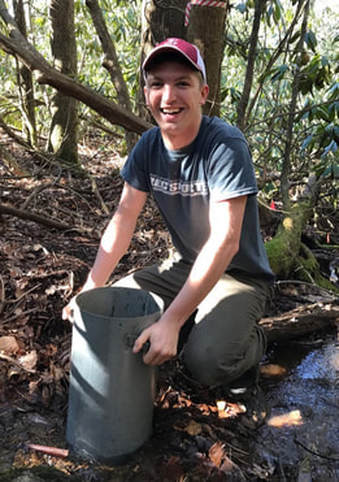 We're a bit behind with website updates, but back in January a new lab member arrived. Welcome to Phoenix Rogers, who recently completed his B.S. degree at the University of Wisconsin-La Crosse. Phoenix will be working on a PhD examining the responses of macroinvertebrate communities in detritus-based streams to higher temperatures. He'll be part of a large team working on our temperature project at Coweeta Hydrologic Laboratory in North Carolina. Sampling for the project starts in May, but Phoenix has already done a dry run at the site. A good start!
I am back from Iceland, after an ultimately successful trip, despite weather that was often difficult and that postponed the start of our five-day 15N additions to the two cold and two warm streams. The shot above is of everyone sampling food web compartments in Stream 11 during the drip. The sun did come out every now and then! The channel experiment continues to go well too. Here's a shot of our REU student Heath Goertzen and MS student Lyndsie Collis collecting and processing tiles for the biomass accumulation time series. You can just make out the diversity of growth responses that are being driven by differences in temperature and nutrient treatments. Some tiles are still effectively bare after six weeks, while a thick algal growth is threatening to overtop some channels. Maybe we'll see some interesting temperature-nutrient interactions. Time will tell.
|
|
|
Accessibility | Equal Opportunity | UA Disclaimer | Site Disclaimer | Privacy | Copyright © 2020
The University of Alabama | Tuscaloosa, AL 35487 | (205) 348-6010 Website provided by the Center for Instructional Technology, Office of Information Technology |

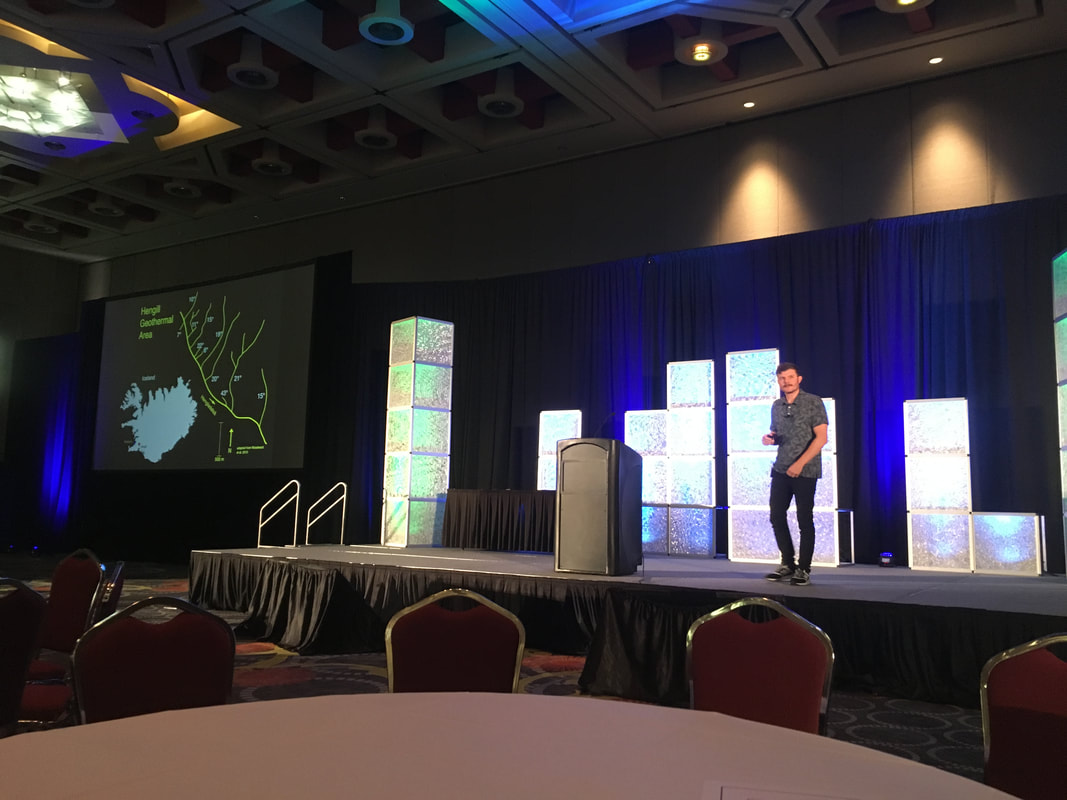
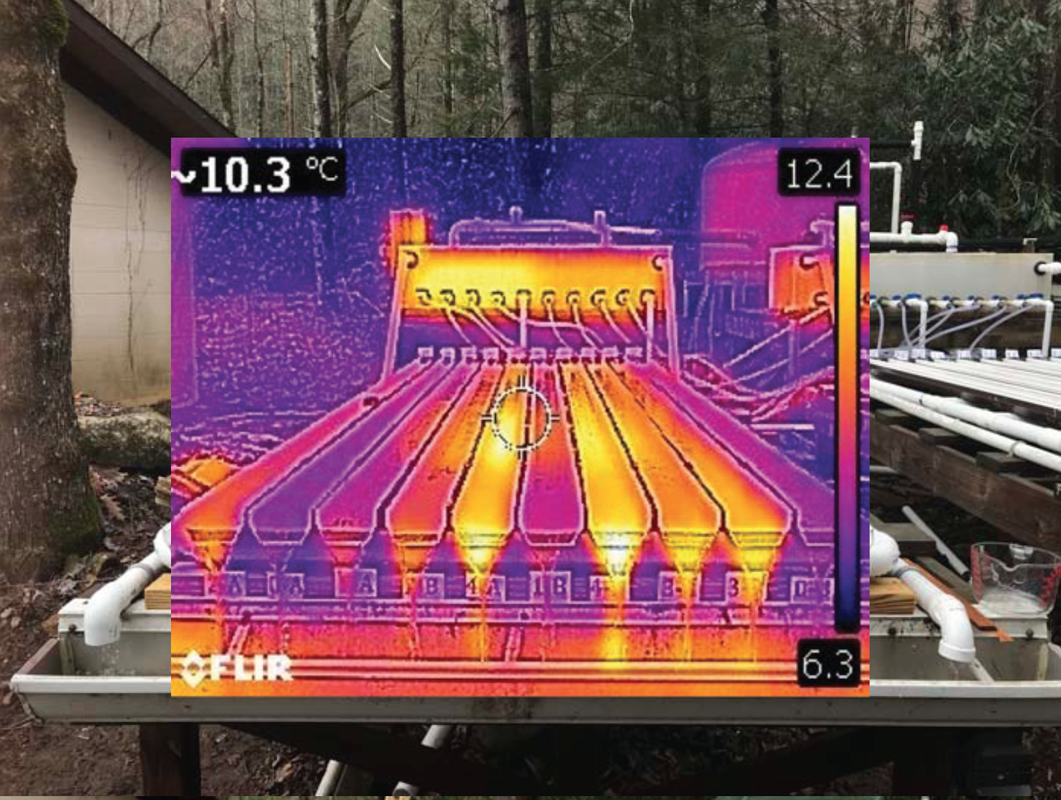
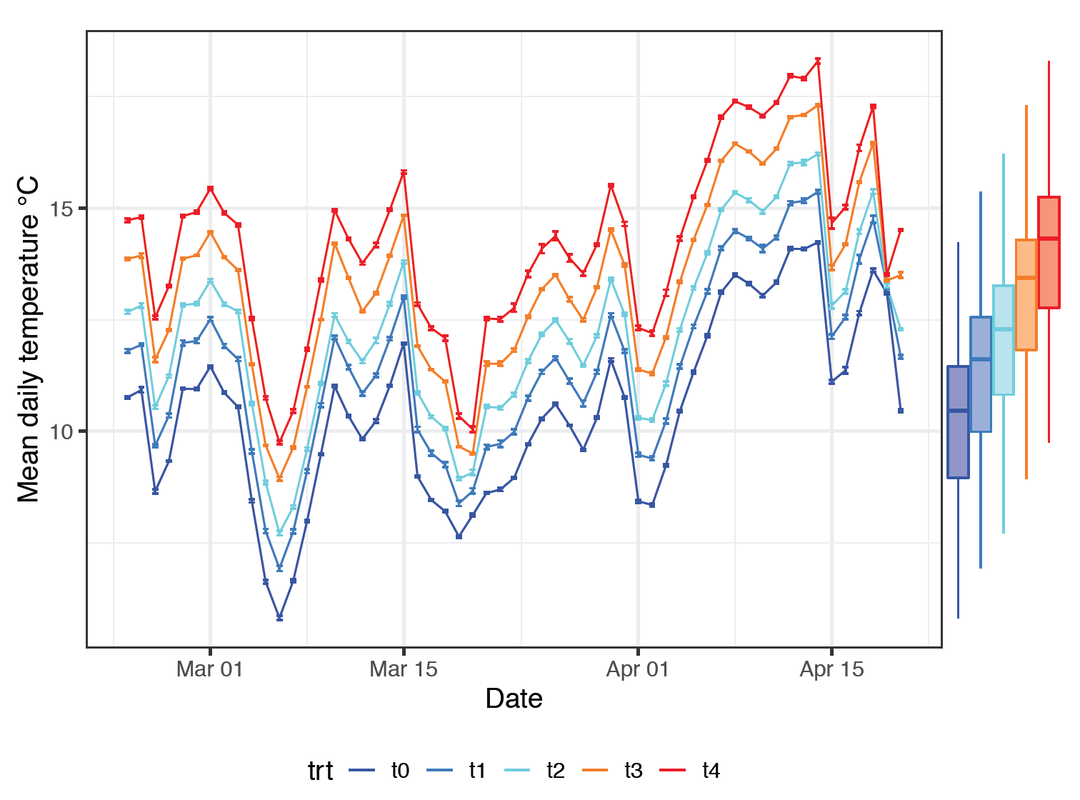

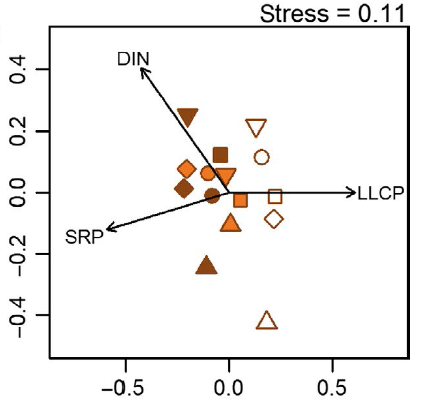
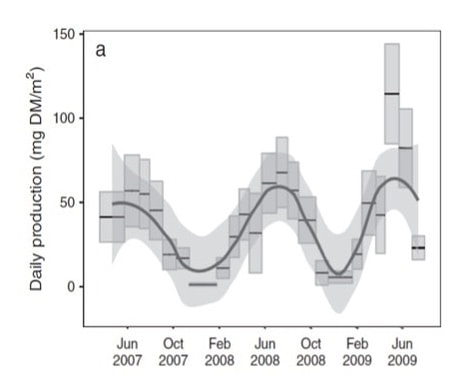
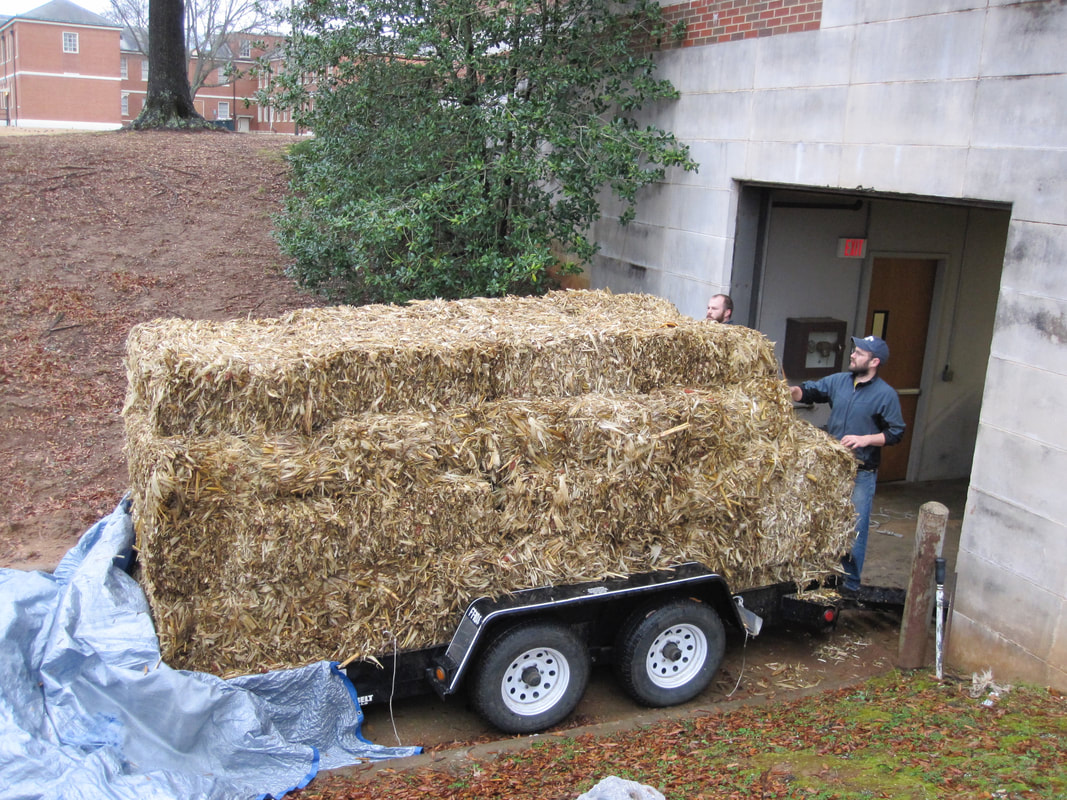
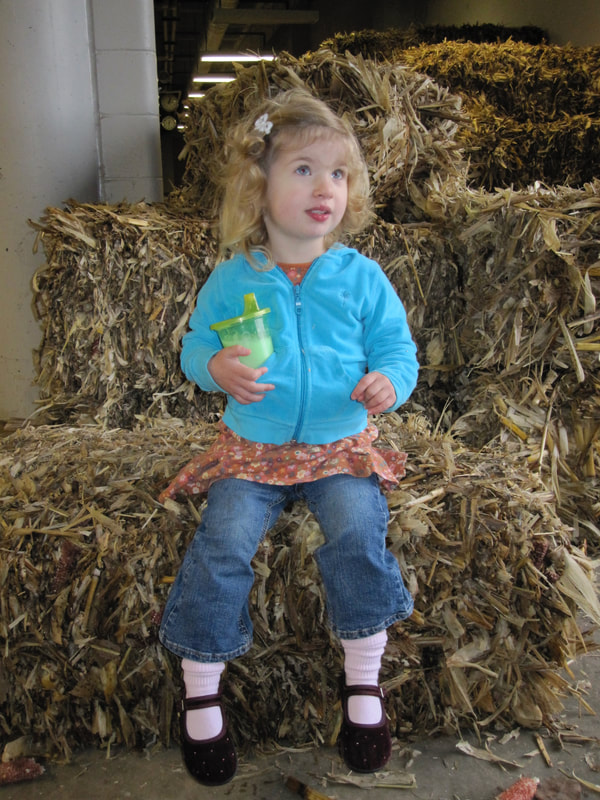
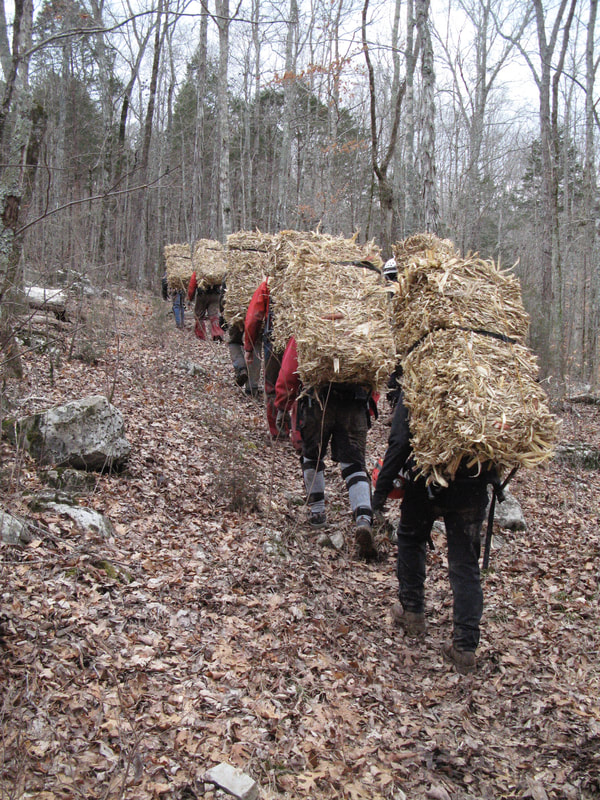

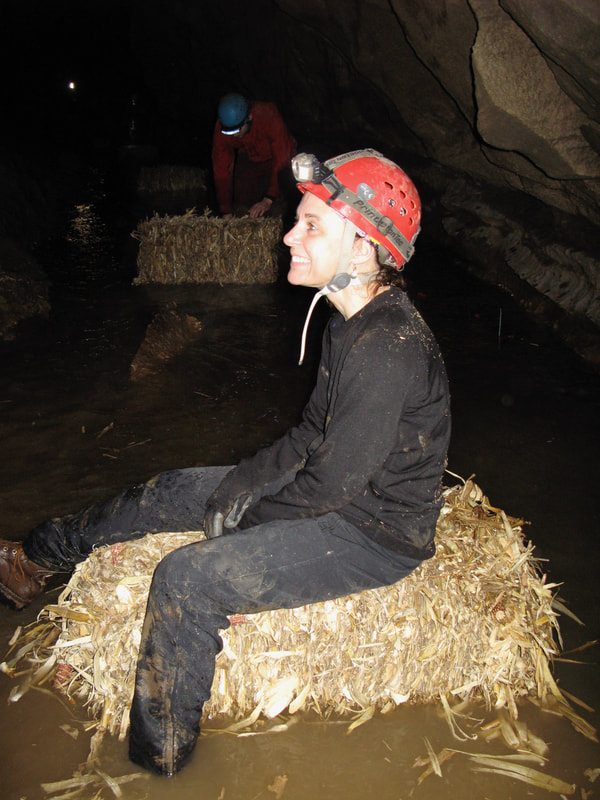
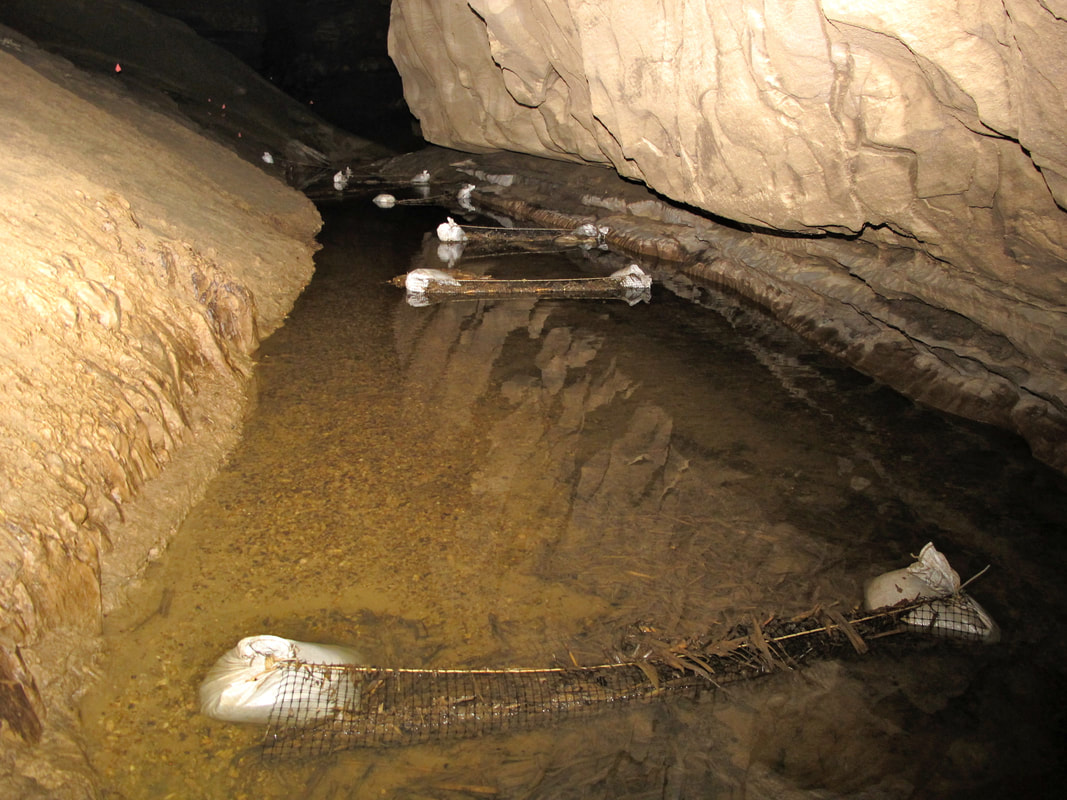
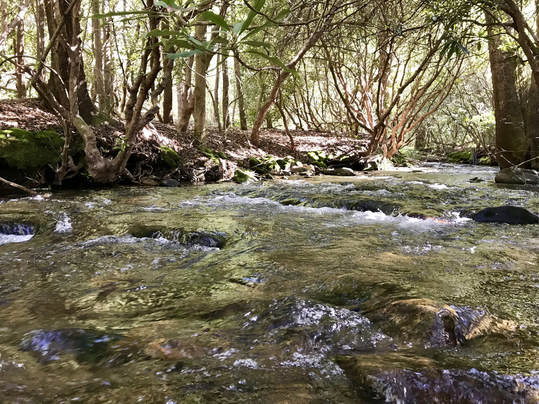
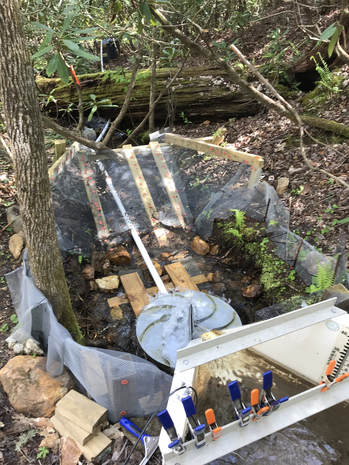
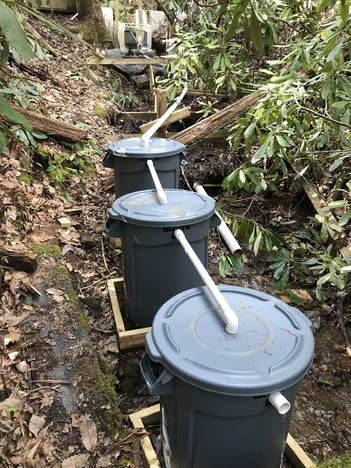
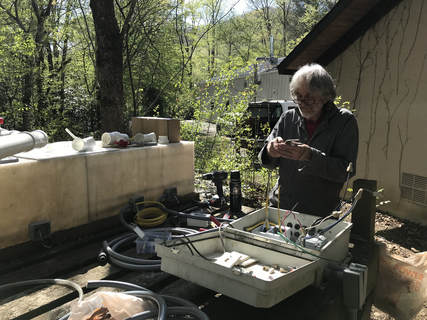
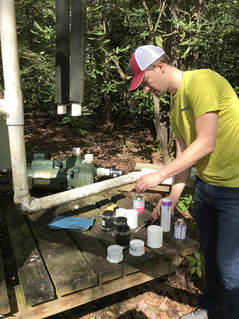
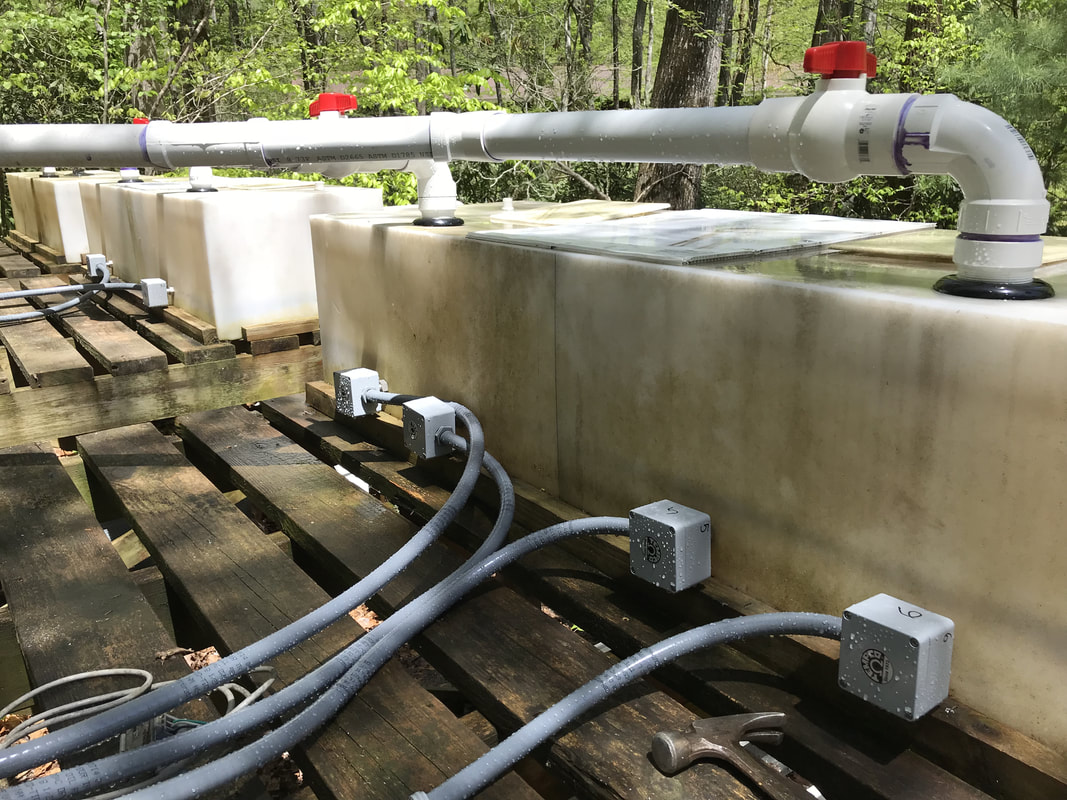

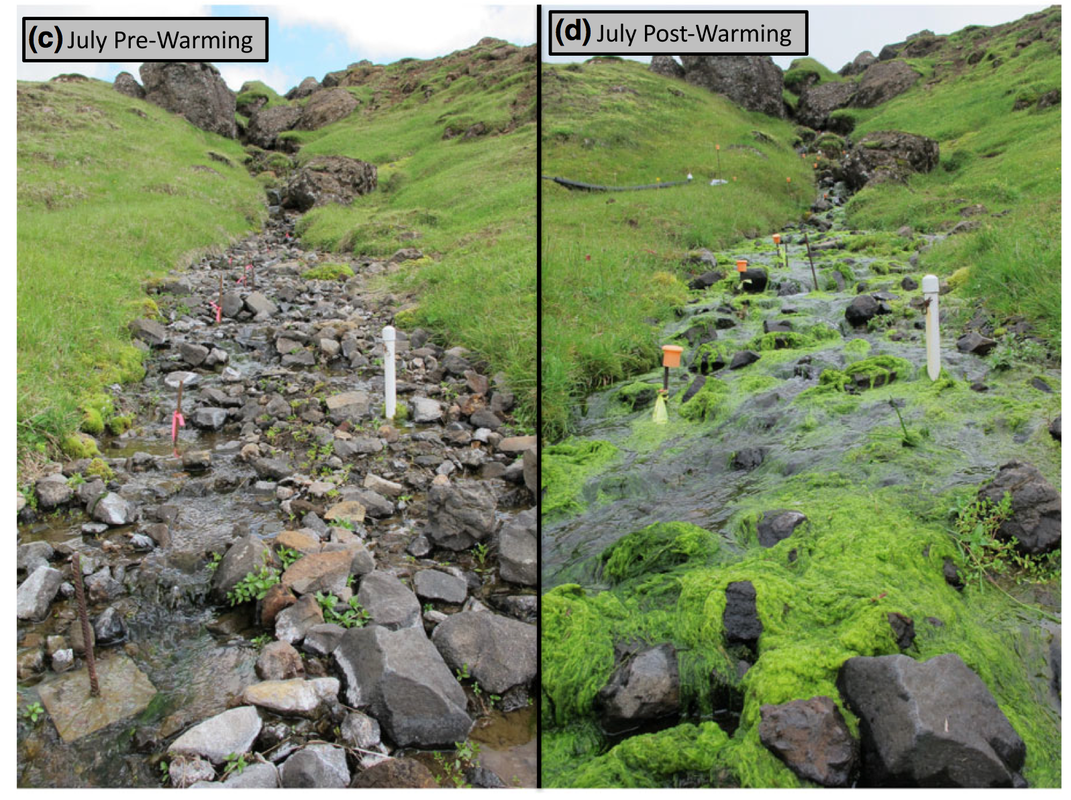
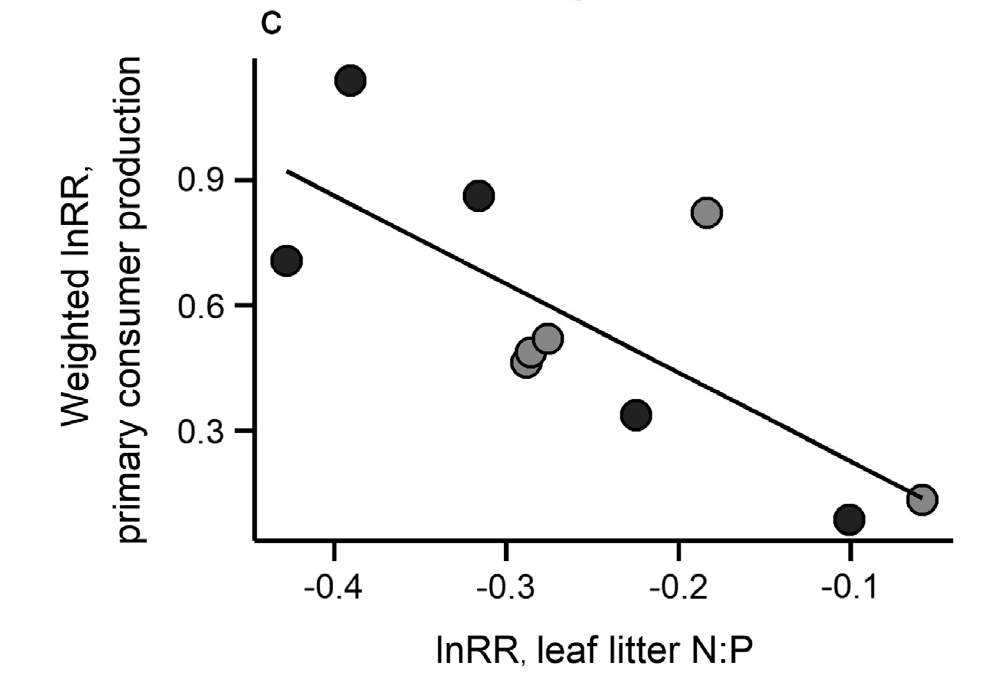
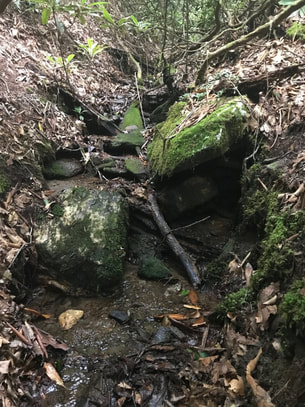
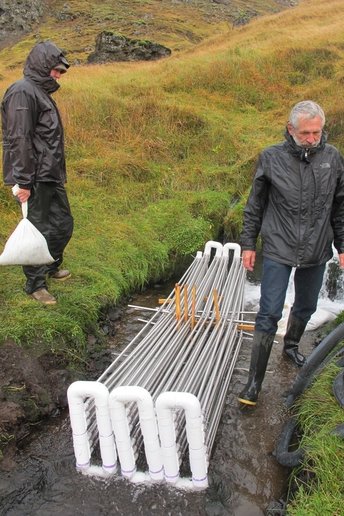
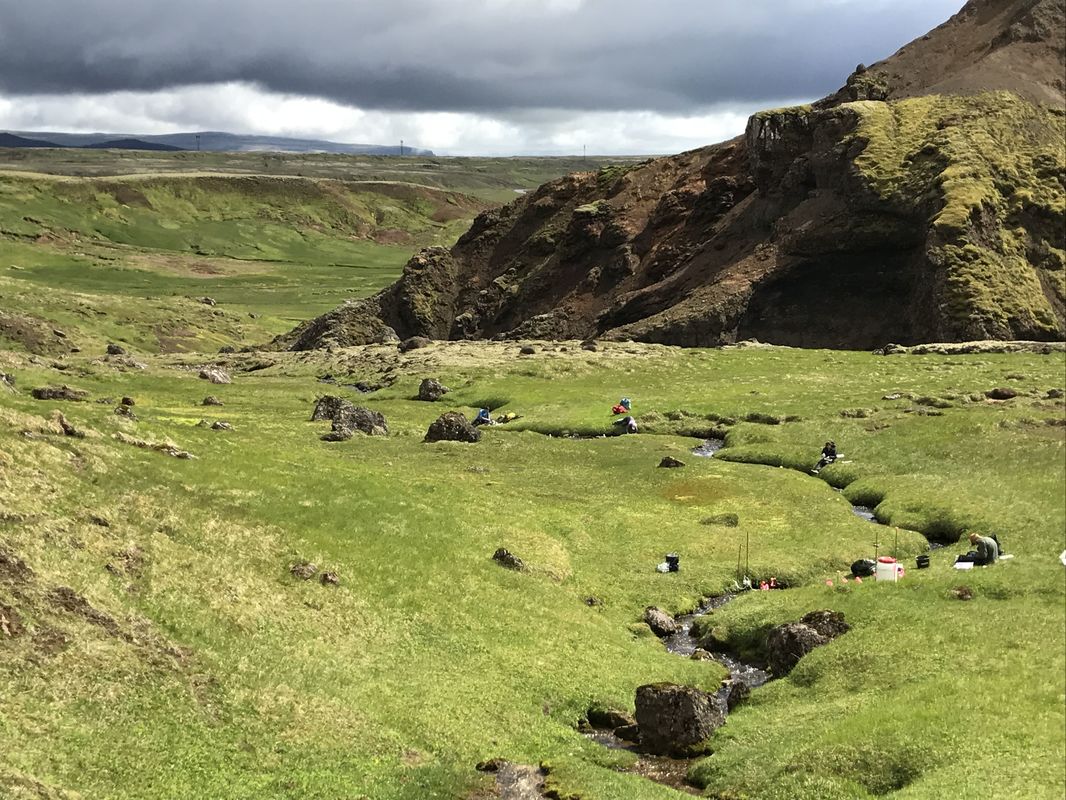
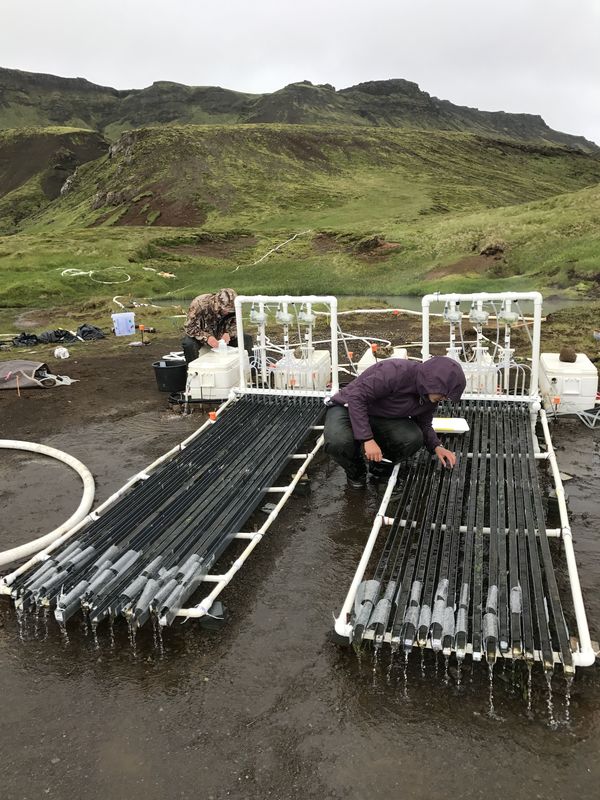
 RSS Feed
RSS Feed